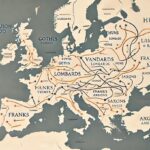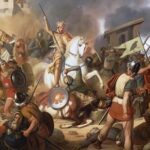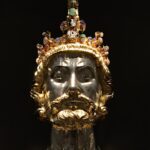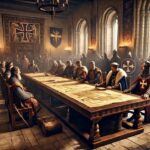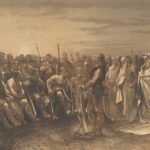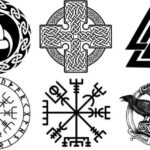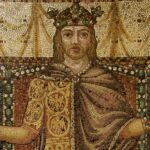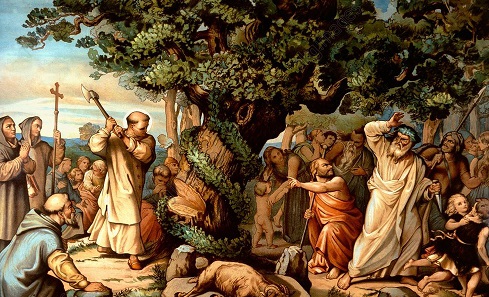
When you picture the Saxons, think fierce, forest-dwelling warriors. Picture long beards, wooden idols, and tribal gatherings by firelight. Now, imagine that within a few generations, these same people are building churches, baptizing their children, and copying Latin manuscripts in monasteries.
The transformation sounds dramatic—because it was. The story of the Saxon conversion to Christianity is one of the most intense and complex cultural shifts in early medieval Europe. It’s a tale of conflict, diplomacy, forced baptisms, reluctant faith, and ultimately, religious integration.
Let’s step into the world of the Saxons and explore how this powerful Germanic tribe went from resisting Christian missionaries to becoming key players in the Christianization of Europe.
Who Were the Saxons?
The Saxons were a group of Germanic tribes originally based in what is now northern Germany and the eastern Netherlands. By the 5th century, some Saxons had migrated to Britain, helping form the Anglo-Saxon kingdoms. But back on the continent, the continental Saxons remained deeply rooted in their traditional, polytheistic ways.
They lived in clan-based societies, practiced pagan rituals, and worshipped a pantheon of nature and war deities—gods like Wodan (Odin), Donar (Thor), and Saxnot. Sacred groves and rivers were central to their spiritual life, and tribal identity was closely tied to religious tradition.
Clashing with the Franks
The Saxons’ resistance to Christianity wasn’t just about theology—it was about sovereignty and identity. Their powerful neighbor, the Frankish kingdom, had already embraced Christianity, especially under rulers like Clovis I and Charlemagne. But the Saxons held out.
That all changed in the late 8th century when Charlemagne launched a series of brutal campaigns to subdue and convert the Saxons. For Charlemagne, unifying his empire meant unifying its faith.
The Saxon Wars (772–804)
For over 30 years, Charlemagne waged war against the Saxons. These campaigns were as much about politics as they were about religion:
- In 772, he destroyed the Irminsul, a sacred Saxon tree or pillar near Paderborn, symbolizing a strike at their gods.
- Resistance flared repeatedly. The Saxons would convert under pressure, only to rebel and return to their old ways.
- The Massacre of Verden (782) marked the darkest chapter. After a major uprising, Charlemagne ordered the execution of 4,500 Saxon prisoners. The act shocked even some contemporaries.
Eventually, the Saxons were subdued. Their leaders were either killed, exiled, or converted. The region was divided into Frankish counties, and Christian institutions were established.
Forced Conversion or Faith?
Many Saxons were initially baptized under duress. Christianity was the “price of peace.” Baptismal fonts were set up in conquered villages. Refusing the faith could mean execution, exile, or loss of property.
But over time, genuine belief took root. Here’s why:
- Monasteries brought education, medicine, and stability.
- Clergy offered mediation and literacy.
- Local leaders began to see Christianity as a political asset, helping legitimize their rule under Frankish overlords.
By the 9th century, Saxony was dotted with churches and monasteries. The diocese of Hildesheim and Corvey Abbey became major religious centers.
Cultural Blending and Continuity
Though many pagan symbols were banned, some Saxon traditions were absorbed into Christian practice. Spring festivals became Easter celebrations. Sacred wells became holy sites. Even saints like Saint Boniface, who had helped convert earlier Germanic peoples, were remembered in ways that blended both Christian and folk memory.
The Saxons also contributed their own flair to Christian Europe:
- Their oral traditions enriched medieval literature.
- Saxon nobility produced key leaders in the Holy Roman Empire, like Otto I, a Saxon-born emperor.
- Saxon craftsmen helped build cathedrals, and Saxon scribes copied religious texts.
The Role of Missionaries
While Charlemagne’s sword played a major role, missionaries laid the groundwork:
- Saint Boniface (though he mainly worked with other tribes) helped pave the way by organizing the German church.
- Saint Liudger, a Saxon himself, became the first bishop of Münster.
- Saint Willehad, an Anglo-Saxon, preached along the Weser River and founded the diocese of Bremen.
These men walked a fine line—preaching peace while working under imperial protection. Their writings and biographies became part of the Christian narrative in Saxony.
Long-Term Impact
The Christianization of the Saxons wasn’t just a religious victory—it redefined German identity. Saxony became a heartland of the Holy Roman Empire. Its churches and schools helped spread learning during the Carolingian Renaissance.
By the 10th century, Saxon rulers like Henry the Fowler and Otto the Great rose to power, blending tribal heritage with Christian kingship. The conversion had come at a cost—but it gave the Saxons a lasting place in European history.
The Saxons didn’t go quietly into the Church. Their conversion was a storm of war, resistance, and reluctant baptism. But what began as forced faith became genuine transformation. From rebel warriors to Christian kings, the Saxons played a crucial role in building medieval Germany.
Want to explore more? Check out Charlemagne and the Carolingian Empire, The Rise of the Franks, or learn about the next wave of cultural contact in The Vikings and Their Influence on Germany and German Castles.

